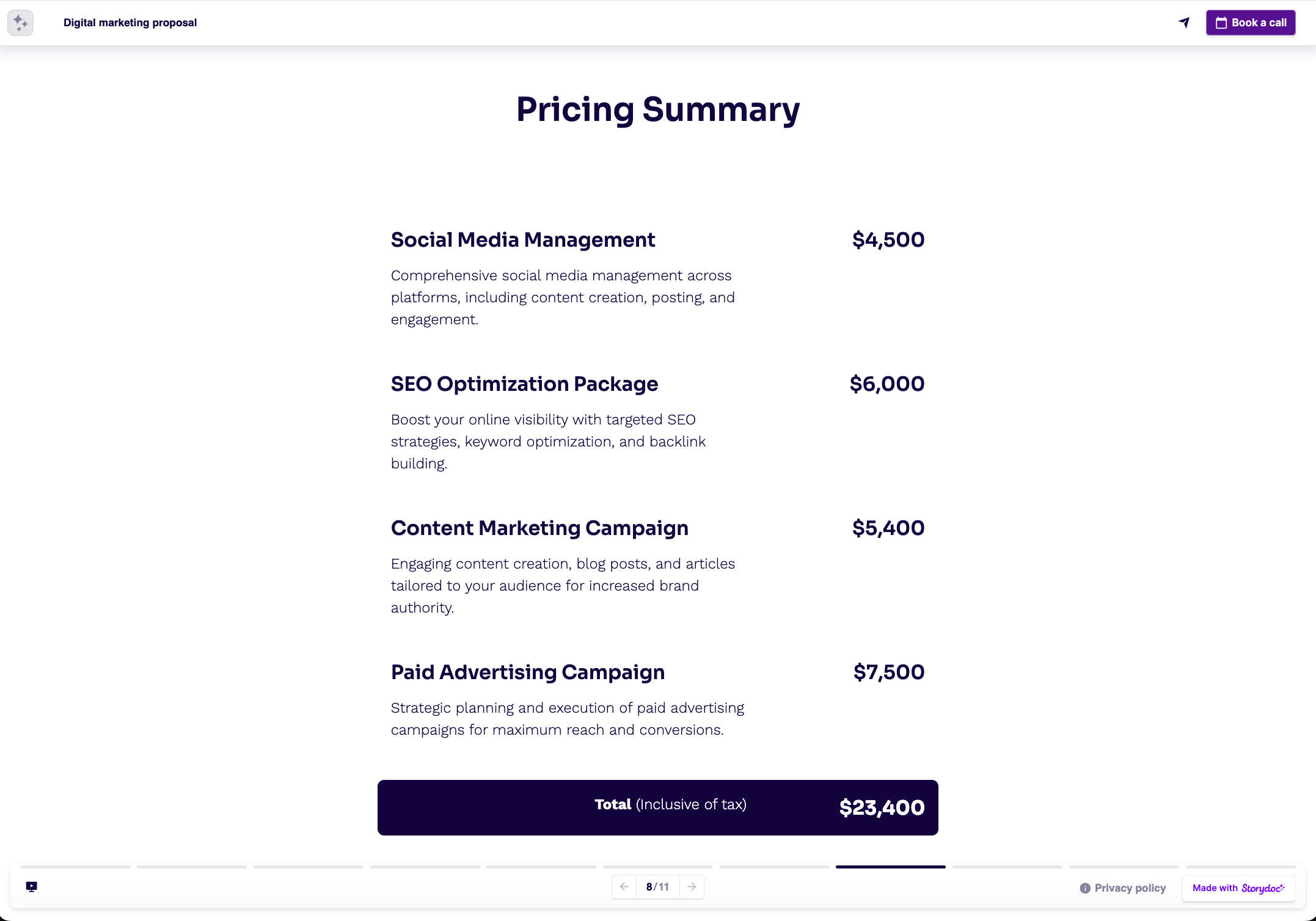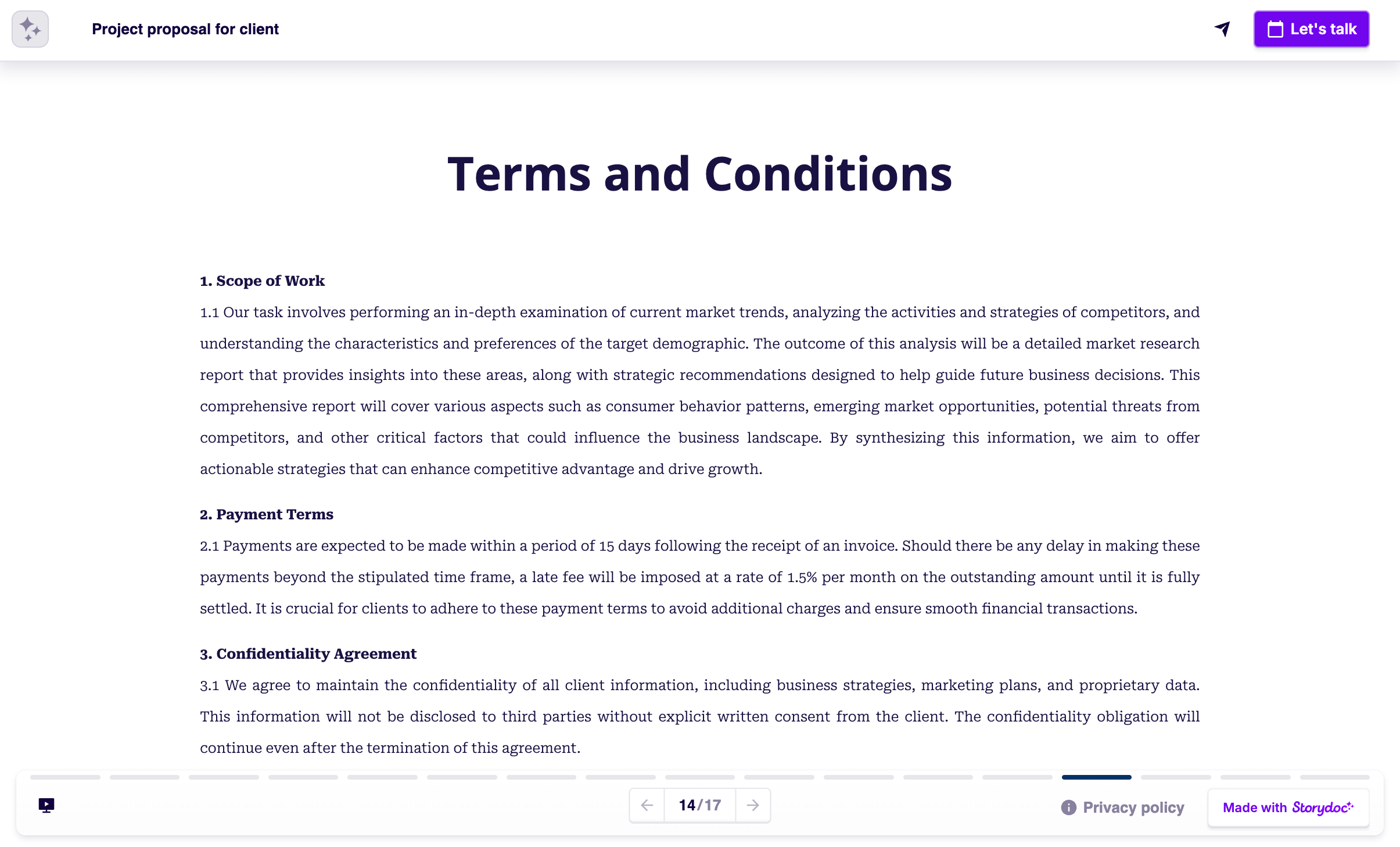How to Write Marketing Proposals That Get Deals Done
Learn how to make a marketing proposal that differentiates your plan, strategy, and services. Get customizable templates to make your best proposal yet.


Learn how to make a marketing proposal that differentiates your plan, strategy, and services. Get customizable templates to make your best proposal yet.
Short answer
Read on to learn how to write your proposal slide-by-slide ⤵
Marketing proposals can take a few different shapes depending on what you actually do for clients. Some are tied to one-off projects, others are more strategic or ongoing.
7 main types of marketing proposals:
Marketing strategy proposal: This one covers the big picture. It’s where you explain how you’ll help a client reach their goals - things like market positioning, messaging, finding the right audience, and choosing the best mix of marketing channels.
Market analysis proposal: This type is more research-focused. It’s about giving the client a clear view of the market - who their competitors are, what’s trending, and what their customers actually need - so they can make smarter decisions.
Marketing project proposal: This is usually tied to a specific job with a clear start and end, like launching a new website or running a short campaign. The proposal outlines what’s involved, how long it’ll take, and what the client can expect at the end.
Marketing campaign proposal: Here, you’re pitching a single campaign - like a product launch or seasonal push. It covers what the campaign will look like, what you’re hoping to achieve, how you’ll do it, and how you’ll measure success.
Marketing budget proposal: This one’s all about where the money’s going. You break down how the client’s budget will be used across different activities and show them why that spend actually makes sense.
Lead generation proposal: If the client’s goal is to bring in new leads, this proposal explains how you’re going to do that - what tactics you’ll use, how you’ll attract the right people, and what kind of results they can expect.
Performance marketing proposal: This type is focused on measurable results - things like clicks, sign-ups, or sales. It’s usually quite data-driven, and sometimes it ties your payment to hitting those targets.
The most common marketing proposal format is a static PDF, but that’s also the least effective. A PDF format makes it practically impossible to stand out from the crowd or convey information in an engaging way.
A promising PDF alternative is the new interactive web-based proposals. This new format lets you include live data and multimedia, embed e-signature widgets, and lead forms, be easily read on mobile, and easily shared via a regular web link.
TIP: It’s good practice to provide the projected reading time to help the reader assess the time and effort involved in reading your proposal.
Example marketing objectives:
How to present a timeline slide:
To establish a timeline effectively, break down major phases into manageable tasks. Use a visual timeline in your business document like a Gantt chart or an interactive timeline slide like in the example below.
This visual aid helps clarify the project timeline, including the specific hours dedicated to each task.
Example timeline structure:
Stop losing opportunities to ineffective proposals.





















